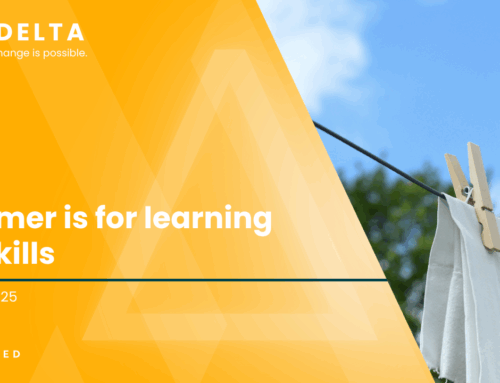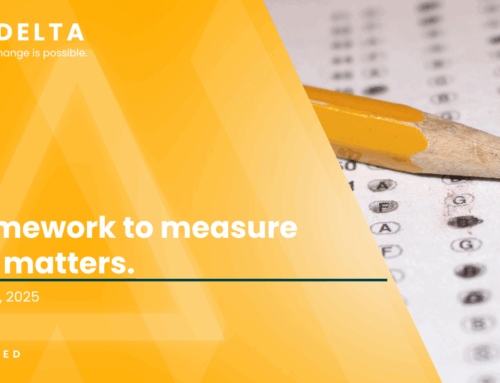The Delta Issue #17
4 questions everyone in education philanthropy should ask their grantees
By: Jessica Baghian
Hi y’all. Jessica Baghian here. On the heels of Giving Tuesday, let’s talk about philanthropy in education.
In the make-or-break years ahead, private money could be a major driver of what happens next for kids — but it will all come down to what philanthropists will drive towards. Will we put our energy behind a focused, coherent, national vision for change? Or will we weigh districts down with red tape and silos that distract from their north star? If what philanthropists want is the former, we have to think small — and what I mean is that we have to think about how philanthropic dollars fit into the lives of students and teachers, not just districts and states.
The common questions I hear philanthropists asking of their grantees go something like this:
- What new program will you launch with these funds?
- When will the proficiency rate of X students reach Y percent?
These questions aren’t wrong, per se, but they miss an opportunity to push for coherence, specificity, and vision — all of which help ensure change for students at scale.
Here are four questions I would love philanthropists to ask more often to compel their grantees to craft meaningful visions for kids:
#1: What do you want to be true for students in your state?
Ask your grantees: What is it like for kids in the classroom today, and what will be different as a result of your initiative? Who and what will they interact with? The first answer you get might be jargon or platitudes — but push your grantees to get more specific. Ask them to imagine they’re explaining to a third grader what she will do in school that is different from what she does today. For example, “In fifth grade, all children will read grade-level books and write and talk about them in class.”
In their roles as trusted thought partners, philanthropies should push their grantees to articulate a clear vision of how proposed initiatives will change the classroom experience for students. We need to go beyond “this initiative will improve reading proficiency” and ask more specific questions. Higher proficiency rates are, of course, the end game. But we can’t just stake out targets for proficiency change and then neglect to spend any time digging into what will materially change for kids that will result in a higher proficiency rate.
Talking about these things early will help everyone — including education leaders — get clarity on what exactly they are working towards. Otherwise, we risk playing a game of nice talk and little action.
#2: How will adult behaviors change as a result of the initiative you are asking us to fund?
Not only do education leaders need to be specific about what will happen for kids, they have to be specific about adults.
A state can pass a great science of reading law, but nothing will actually change for kids until superintendents, principals, and teachers change their actions to align with it. If we want kids to read books, we need adults to know how to use a curriculum that will get kids reading books. For teachers to be able to use the curriculum, principals have to know how to support teachers with the new curriculum. It all needs to connect.
Ask your grantees to map every adult in the “implementation chain” — all the adults whose behaviors have to change in some way in order for kids to experience something different in the classroom. We’ll have more on the implementation chain next week.
#3: How will you scale this idea?
Too often in education, we play small ball — this classroom or this school did something great.
Funders can push on the question of scale: What would it take to bring this initiative to every classroom and every school across the state?
This doesn’t mean we shouldn’t do pilot programs to learn and tweak first, but it does mean that all pilots should be designed with the aim of growing to meet the size of the challenges we face in education. Asking this question will make sure philanthropy is only funding leaders who are ready to pursue ambitious change at scale for kids.
#4: How can we help?
Chances are good that your grantees work with multiple funders with reporting and compliance requirements that add up to create a pretty heavy administrative burden. Sometimes, it pays to ask your grantees how you can help without creating too much red tape.
As much as possible, we encourage philanthropy to look for leaders who already have a bold vision and then let them lead. When a leader has a great idea or momentum and just needs a little fuel for the fire, fund them. With stimulus dollars going away and an uncertain future at the federal level, philanthropy has a big opportunity to power bold change.
Let’s Get Muddy
Whether you are a philanthropist or grantee, I want to hear: What do you think of these questions? What would you add to my list?
We’ll be back next week to discuss one of Kunjan Narechania ‘s favorite topics: The implementation chain.





